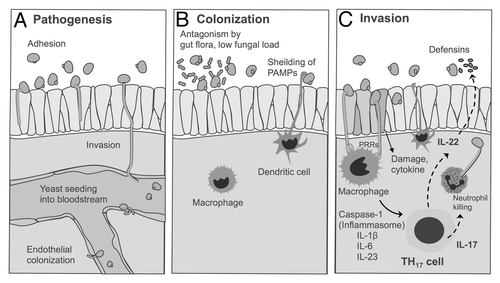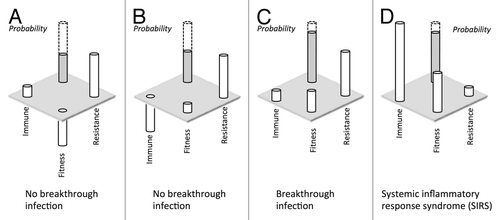Figures & data
Figure 1. Pathogenesis and host immune response to invasive candidiasis. This figure was recreated in a different format from the review by Gow et al.Citation8

Table 1. Acquired Candida resistance mechanisms and potential impact on host pathogen interaction
Figure 2. Illustrative hypothetical scenarios for the risk of breakthrough infection with resistant Candida species. In (A), expression of a new resistance mechanisms in the presence of antifungal therapy does not alter host immune detection/elimination, but diminishes pathogen fitness. Therefore, the probability of breakthrough infection is low at the current clinical status of the host. In (B), the expression of the resistance mechanism is not associated with a significant fitness cost but does impact immune evasion strategies, therefore the emergence of the resistant subpopulation in held in check by the immune response. In (C), expression of the resistance mechanism is not associated with significant costs in terms of pathogen fitness or host immune evasion, therefore the resistant subpopulation “emerges” in the presence of antifungal therapy. In (D), the isolate does not express resistance mechanisms in the presence of drug, but the high virulence and strong induction of immune responses lead to sepsis (SIRS). The concept for this figure was derived from review by James Anderson.Citation80
